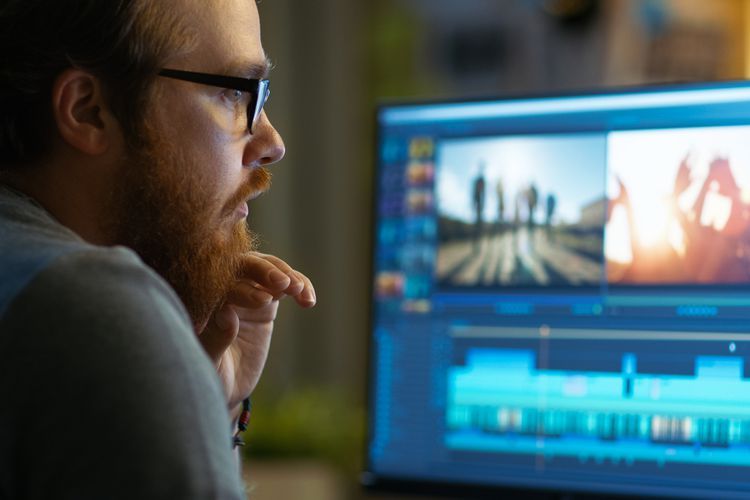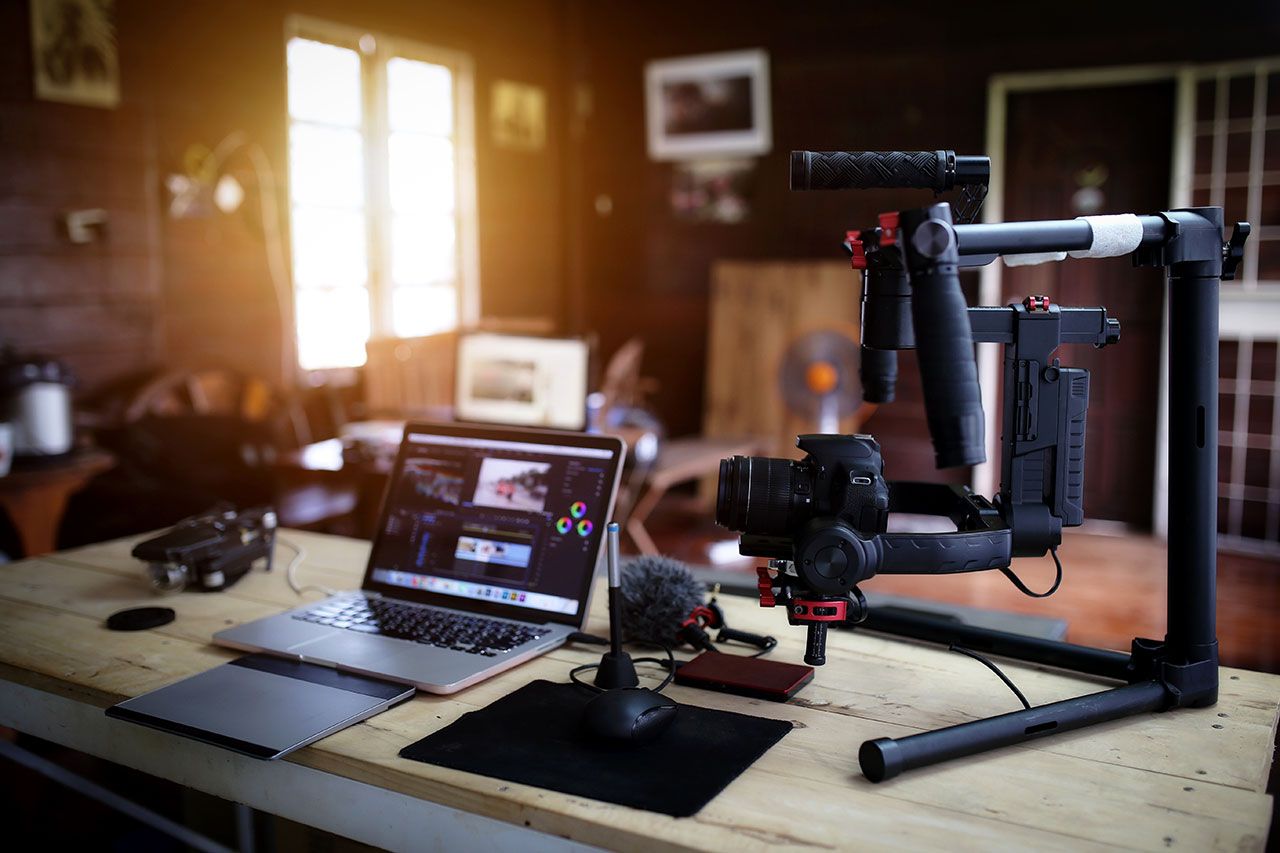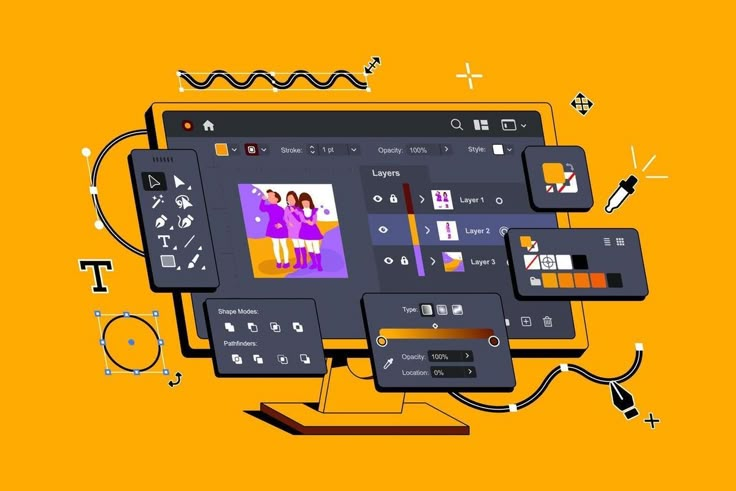Video has cemented its position as the dominant medium for communication, entertainment, and education across the digital landscape. From compelling social media narratives to feature-length documentaries, the success of any video hinges not just on the quality of the raw footage, but on the power of the edit. Mastering video editing tools and techniques is the indispensable skill required to transform mere clips into captivating, highly-retainable content—a vital factor for maximizing Google AdSense revenue and achieving superior Search Engine Optimization (SEO) performance.
The journey from a beginner struggling with basic cuts to a professional commanding complex visual effects and color grades is steep, but entirely navigable with the right tools and strategic learning path. The industry offers a vast ecosystem of software, ranging from intuitive, free mobile apps to industry-standard suites used in Hollywood. This comprehensive guide will deeply explore this ecosystem, detailing the features, workflows, and advanced techniques that define each stage of the editing journey, providing a definitive roadmap for creators determined to elevate their content to a professional standard and secure competitive advantage.
Part I: The Beginner’s Toolkit and Foundational Skills
The first step in video editing is to overcome the fear of the timeline. Beginner-friendly software focuses on an intuitive interface and a streamlined drag-and-drop workflow, allowing new users to focus on the fundamental principles of storytelling and pacing.
1. Essential Beginner Software: Simplicity and Accessibility
Choosing the right entry-level tool minimizes frustration and accelerates the learning curve. These tools are often free or low-cost, providing necessary core features without overwhelming complexity.
A. CapCut: This tool has rapidly gained popularity, particularly for creators focusing on short-form vertical content (TikTok, Reels, Shorts). Its key advantage is its user-friendliness and seamless mobile-to-desktop workflow. It excels at quick cuts, text overlays, and trendy effects, often providing AI-powered tools like auto-captioning directly in its free version, making it the ideal starting point for social media creators prioritizing speed and viral trends.
B. Wondershare Filmora: Positioned as the best all-around beginner editor, Filmora successfully bridges the gap between simplicity and powerful features. It employs a clear, intuitive interface yet packs tools like motion tracking, color matching, and a robust library of effects and transitions. Filmora is often recommended for early YouTube creators who want to produce polished, engaging videos without the steep learning curve of professional suites.
C. Apple iMovie (for Mac/iOS Users): Free and pre-installed on Apple devices, iMovie is an excellent starting tool characterized by its magnetic, trackless timeline that prevents gaps in the footage. It is perfect for quickly compiling personal videos, basic vlogs, or simple educational content, and it offers solid features like cinematic mode effects and good audio controls for a free platform.
2. Core Editing Concepts for the Novice
Before diving into complex effects, every beginner must master the foundational concepts that govern video storytelling.
A. The Three-Point Edit: This technique is the basis of all non-linear editing (NLE). It involves setting three points: an In-Point and an Out-Point on the source clip (what you want to use) and an In-Point on the timeline (where you want to place it). Mastering this efficient, precise technique replaces the cumbersome drag-and-drop process.
B. Essential Cuts and Transitions: The “cut” is the most important transition. Beginners should practice strategic use of:
- The Standard Cut: An immediate shift between two shots. Used for quick pacing or changing perspectives.
- The Jump Cut: An abrupt transition, often used to eliminate dead space, condense time, or add energy to a monologue.
- The J-Cut and L-Cut: Audio from one clip either trails over the cut into the next clip (L-Cut) or starts before the picture of the next clip (J-Cut). These cuts are essential for smooth, professional dialogue sequencing.
C. Audio Leveling and Mixing: One of the fastest ways to improve video quality is through audio. Beginners must learn to:
- Normalize Dialogue: Ensure all voice audio is at a consistent, safe level (often around -12dB to -6dB for broadcast).
- Layer Music and Effects: Use background music subtly, ensuring it never overpowers the voiceover or dialogue. A common amateur mistake is loud, distracting music.
Part II: The Aspiring Pro: Bridging the Gap
As confidence grows, creators often find the limitations of basic software restrictive. This stage involves transitioning to prosumer-level tools and developing skills in visual aesthetics and efficient workflow management.
1. The Prosumer Software Landscape
The following tools offer the depth and flexibility needed to handle complex projects while maintaining excellent learning resources.
A. DaVinci Resolve (The Disruptor): DaVinci Resolve, initially known only for its world-class Color Grading suite (Color Page), has evolved into a complete, full-featured NLE that includes editing (Cut and Edit Pages), audio post-production (Fairlight), and motion graphics/VFX (Fusion). Its powerful free version—which rivals many paid competitors—is the single best value proposition in video editing today, making it ideal for aspiring professionals who want to master high-end color and sound design early in their career.
B. CyberLink PowerDirector: A strong contender for enthusiasts and small business marketers, PowerDirector offers a feature-rich, intuitive environment with strong AI integration (e.g., sky replacement, noise reduction) and rapid rendering capabilities. It is known for its speed and comprehensive toolset for creating polished, high-quality content without the steep learning curve of industry titans.
C. Adobe Premiere Elements: A stepping stone before the full Creative Cloud suite, Elements is designed for hobbyists and memory-keepers. It balances user-friendliness with some advanced features, offering guided edits and automated tools to help users achieve professional results with minimal manual effort, making it a good choice for those who anticipate eventually moving into the Adobe ecosystem.
2. Developing Efficient Workflow and Aesthetic Skills
The jump from beginner to prosumer is defined by workflow efficiency and aesthetic mastery.
A. Media Management and Organization: Professionals spend significant time organizing footage before editing begins. This involves:
- Project Structure: Creating clear, standardized folder structures (e.g., Footage, Audio, Graphics, Exports).
- Bin Organization: Using the software’s bins/folders to categorize clips by scene, camera, or date.
- Proxy Media: For editing high-resolution (4K/6K) footage on less powerful computers, creating low-resolution Proxy files ensures smooth editing performance, saving hundreds of hours of rendering lag.
B. Color Correction vs. Color Grading: This is a critical distinction that elevates content appearance:
- Color Correction: The technical process of balancing white levels, black levels, and exposure to make the footage look natural and consistent across all clips.
- Color Grading: The artistic process of applying a stylistic look (a “mood” or “tone”) to the video, often using LUTs (Look-Up Tables) or custom curves to achieve a cinematic or branded aesthetic. DaVinci Resolve’s color page is the industry standard for this task.
C. The Use of B-Roll and Cutaways: Effective storytelling uses B-roll (supplementary footage) to enrich the narrative, cover jump cuts, and maintain viewer engagement. Prosumers master the art of the cutaway, shifting from the primary action (A-roll, e.g., an interview subject) to a related visual insert (B-roll, e.g., a relevant product or location shot) to add context and dynamism.
Part III: The Professional Realm: Industry-Standard Tools and Advanced Techniques
The peak of video editing involves industry-standard NLEs and mastery of complex, specialized post-production techniques. Professionals prioritize reliability, collaboration features, deep integration with other specialty applications, and advanced effects capabilities.
1. The Industry Standard Software Suites
These platforms are the choice for feature films, large-scale commercial productions, and high-end agency work due to their stability and expansive feature sets.
A. Adobe Premiere Pro (The Industry Workhorse): As the cornerstone of Adobe’s Creative Cloud, Premiere Pro is favored for its unparalleled integration with other essential applications like After Effects (VFX/Motion Graphics) and Audition (Advanced Audio Mixing). Its clear, flexible interface, auto-transcribing, and robust collaboration features make it dominant in fast-paced production environments, especially when dealing with complex motion graphics.
B. Apple Final Cut Pro (FCP) (The Mac Specialist): FCP is renowned for its speed and optimized performance on Apple hardware, often rendering and exporting faster than its competitors. It utilizes a Magnetic Timeline concept similar to iMovie but scaled for professional use, excelling in rapid-fire, high-volume editing, making it highly popular among solo professional creators and news production teams.
C. Avid Media Composer (The Stability King): Avid remains the undisputed champion for large-scale, collaborative projects like feature films and television series. Its strengths lie in its rock-solid stability, advanced media management, and robust tools designed for multi-editor workflows, often involving shared storage and strict security protocols. Avid ensures project integrity and collaboration on massive, long-term productions.
2. Advanced Post-Production Mastery
Professional editing extends far beyond the timeline. It involves specialized skills and tools to deliver a fully polished final product.
A. Motion Tracking and Masking: Professionals use these techniques to isolate and track elements within a frame. Motion Tracking automatically follows a specific object (like a character’s head or a moving car) so graphics, censorship blurs, or titles can be precisely attached to it. Masking is used to apply effects or color grades only to a selected area of the frame (e.g., lightening a dark face while leaving the background alone).
B. Multicam Editing: Essential for concerts, interviews with multiple cameras, and live events. Professionals must fluidly edit between 4, 8, or even 16 synchronized camera angles in real-time. All major NLEs support multicam, allowing the editor to switch angles on the fly and refine the cuts afterward, saving immense time on multi-camera projects.
C. Sound Design and Audio Post-Production: A truly professional video requires dedicated sound design. This involves:
- Mixing and Mastering: Ensuring the final audio mix is clear, balanced, and compliant with broadcast standards (loudness normalization).
- Foley and Sound Effects: Adding crucial atmospheric and real-world sounds (e.g., footsteps, cloth rustles, door slams) to enhance realism and immersion.
- Noise Reduction: Utilizing advanced tools (like those in Adobe Audition or DaVinci Resolve Fairlight) to remove hums, hiss, and excessive background noise from location audio.
D. Compositing and Visual Effects (VFX): For cinematic and commercial work, the editing software must integrate seamlessly with dedicated VFX platforms.
- After Effects (Adobe): The industry standard for motion graphics, lower thirds, title sequences, and 2D/3D compositing.
- Fusion (DaVinci Resolve): Resolve’s built-in node-based compositing environment, used for everything from particle effects to complex green-screen keying.
Part IV: The SEO-Driven Editor: Pacing, Retention, and Optimization
For creators focused on maximizing reach and AdSense revenue, video editing is intrinsically linked to digital strategy and audience retention metrics. Long-form content (10+ minutes) is particularly important for deep SEO value and is entirely dependent on expert editing.
1. Editing for Audience Retention and SEO
The YouTube and Google algorithms heavily reward videos that keep viewers engaged for longer periods (high Audience Retention and Watch Time). The editor is the primary driver of these metrics.
A. Eliminating “Fluff” and Dead Space: In long-form content, expert editors ruthlessly eliminate unnecessary pauses, awkward transitions, and long establishing shots that do not contribute directly to the core message. Aggressive jump cutting and rapid-fire visual changes maintain a high pace, crucial for retaining modern viewers.
B. Visual Enhancement of Key Points: For educational or review content, the editor must support the speaker’s words with constant visual reinforcement. This includes:
- Text Overlays and Animated Titles: Highlighting keywords on screen (crucial for SEO citation and AI understanding).
- Stock Footage and Graphics: Inserting high-quality B-roll or animated diagrams every 5-15 seconds to prevent visual monotony.
C. Strategic Use of Chapters and Timestamps: Editing long-form videos with clear structural segments allows creators to use timestamps and chapters in the video description. This is an essential SEO tactic, allowing Google’s search results and AI summarization tools to surface specific moments within the video, greatly increasing the video’s visibility in search results.
2. Final Delivery and Platform Optimization
The final stage involves exporting the video with settings optimized for the target platform and ensuring all necessary assets are secured.
A. Codec and Export Settings: Professionals select the correct video codec (e.g., H.264 for YouTube, ProRes for broadcast) and bitrate/resolution (e.g., 4K, 1080p at 24/30/60 fps) to balance file size and quality, ensuring fast upload times without visual artifacting.
B. Archiving and Project Integrity: A critical professional step is archiving. This involves:
- Consolidating Media: Collecting all used media files into one organized project folder.
- Creating a Project Archive: Using the NLE’s built-in tools to “clean” the project file, removing unused clips and minimizing file size for long-term storage, ensuring the project can be re-edited years later.
C. Metadata and Transcript Integration: For maximum SEO value, the final video should be paired with a full, accurate transcript (either manually created or AI-generated and edited). This provides search engines with text-based content to index, boosting its relevance for specific search queries.
Conclusion: The Editor as the Ultimate Storyteller
Video editing is a highly technical discipline, but at its core, it is the art of storytelling. The evolution of video editing tools, from the simplicity of CapCut for the beginner to the collaborative complexity of Avid for the professional studio, reflects the exponential growth of digital media. Success in the competitive online landscape—and the ability to generate meaningful AdSense revenue—relies fundamentally on an editor’s mastery of pacing, aesthetic quality, and workflow efficiency. By adopting an iterative approach, starting with accessible tools, mastering the foundational techniques, and continuously advancing into professional-grade software and specialized post-production skills, any creator can achieve true professional mastery and ensure their visual narratives are not just seen, but remembered.









